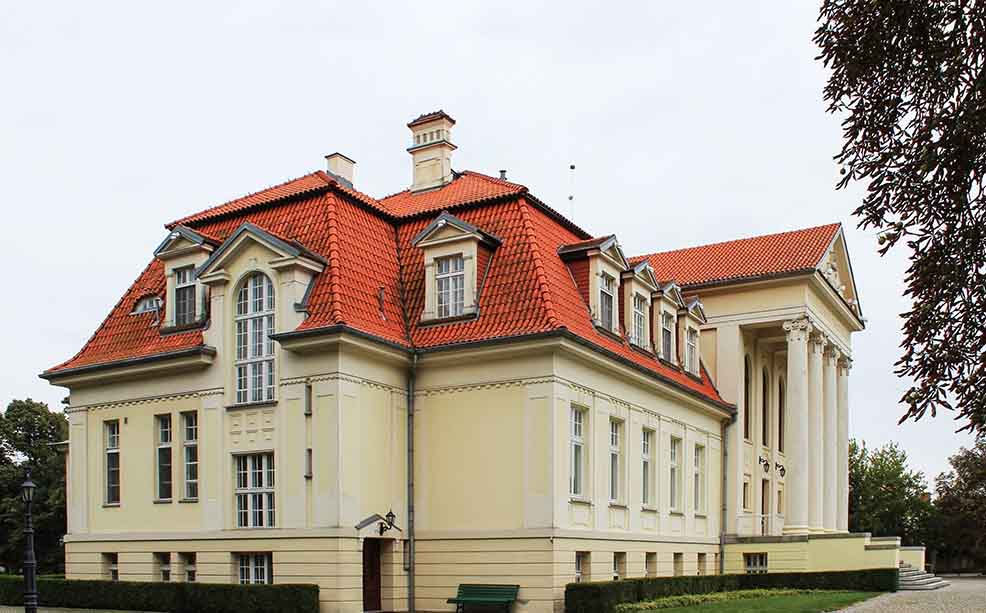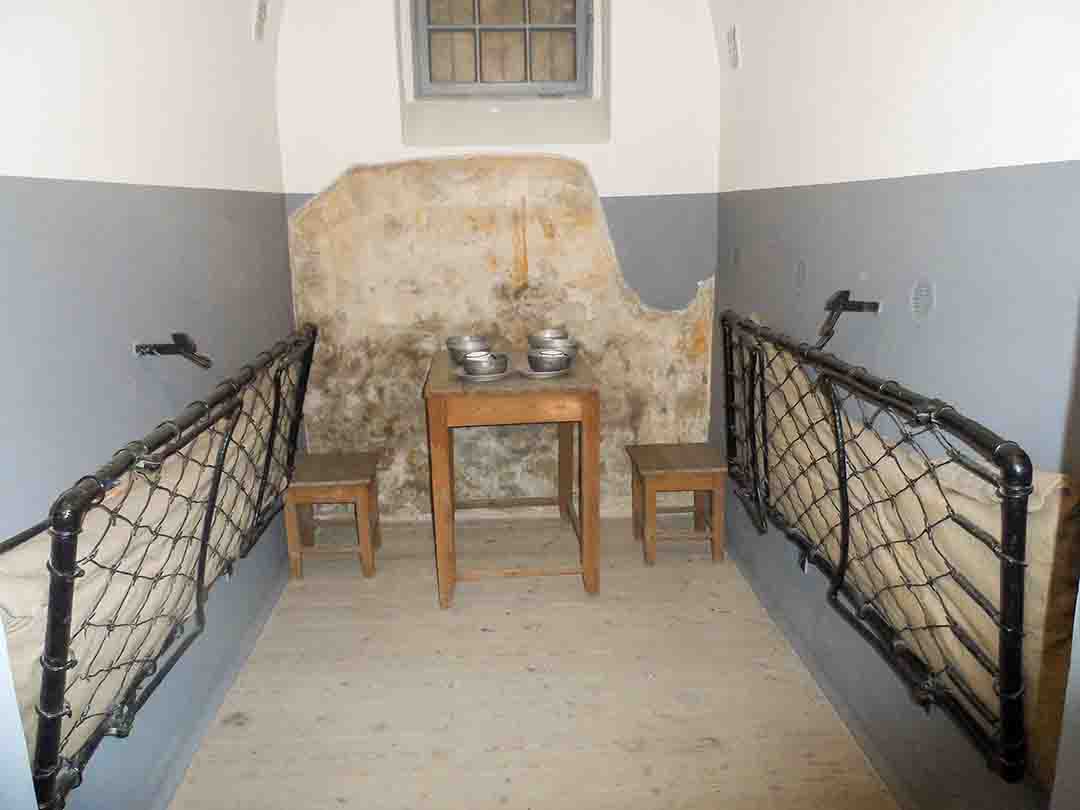The Fire Brigade is an organized formation that deals primarily with prevention of and fighting fires. The Fire Brigade is no stranger to rescuing human life in accidents of all kinds, and it also fights the consequences of non-compliance with environmental protection standards.
In order to honor all employees of this profession, Fireman's Day is celebrated in Poland on May 4 every year. The patron saint of firefighters is St. Florian, whose name-day falls on that day. Officially, the firefighters holiday was established in 2002 by the Sejm of the Republic of Poland, with the amendment to the Act on the State Fire Service.
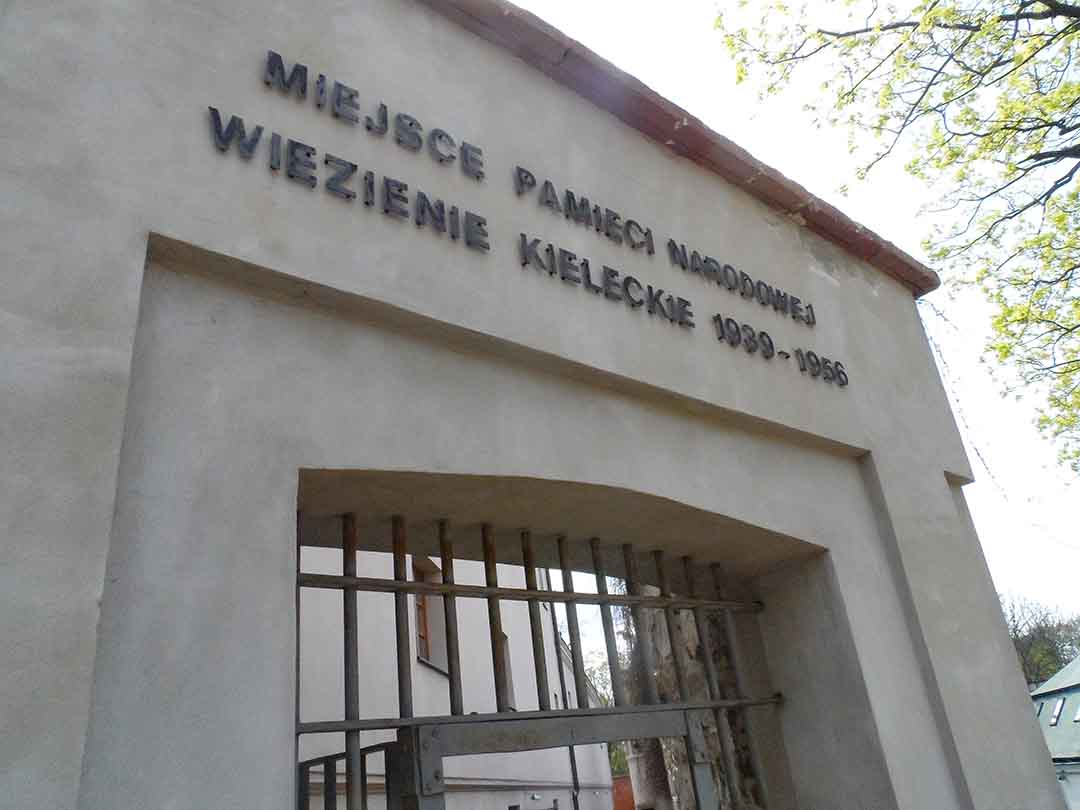
Prison-museum in Kielce (photo by the author)
The editorial staff of Kuryer Polski went to Kielce, where the old prison is located, broken up by partisans of the Home Army under the command of Antoni Heda "Szary", cooperating with a small fire department. To commemorate this special holiday, we celebrated it with a minute of silence in one of the prison cells.
Firefighters' Tasks
The tasks of firefighters include, in addition to fighting fires, removing the effects of natural disasters and catastrophes in which human life is at risk.
The oldest of the known fire fighting units were the Roman Vigiles. It was a group of Roman citizens, organized in AD 6 by the emperor Octavian Augustus, perfectly fit and skilled in fighting fires.
Polish Vigiles
Some Polish manufacturing and other companies, as part of the preventive activities of their workplace, set up their own firefighting units. These are, for example, airport fire brigades, railroad teams, at refineries etc. They are often referred to as Vigiles Factory Branches.
Examples of highly specialized fire services are the airport fire brigades at Okęcie, Balice and other airports. The area of operation of the airport fire brigade covers the operational area of a given airport and the area around it.
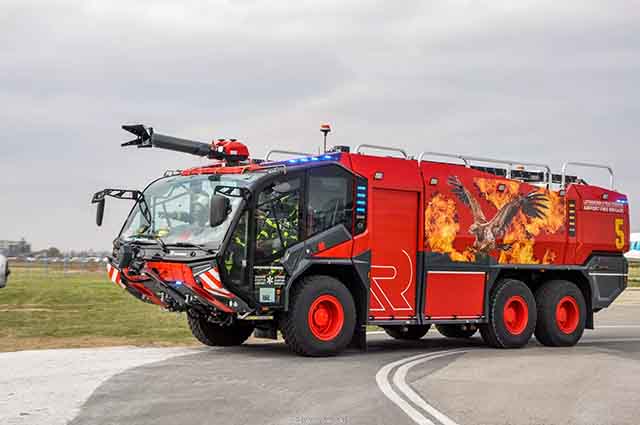
Modern Rosenbauer-Panther fire trucks at the Chopin airport (Source: aviation.net/lukasz_s)
International Civil Aviation Organization (ICAO) regulations require that the first fire trucks must be able to reach any potential incident at the airport in less than 3 minutes. Therefore, the airport fire departments are equipped with specialized, fast fire trucks that can reach speeds of up to 160 km/h (100 mph), special firefighting vehicles equipped with a lance for piercing the fuselage of airplanes to extinguish fires inside, and heavy fire-fighting vehicles enabling extinguishing burning fuel, etc. [8]
The Beginnings of the Fire Brigade in Poland
It is believed that the first principles of modern firefighting were developed by Andrzej Frycz Modrzewski, the royal secretary and political writer of the Renaissance period. The first professional fire brigade in Poland was appointed on February 5, 1752 in Ostrów Wielkopolski by the Crown Marshal Franciszek Bieliński. As the then owner of the city, he issued the ordinance "Fire order for the city of Ostrów", which is commonly regarded as the appointment of the first professional fire brigade in Poland. Unfortunately, during the partitions, this unit stopped operating, and the local municipal authorities tried to oblige the residents to participate in extinguishing fires. In this way, the nucleus of something that, in 1867, turned into the Volunteer Fire Department of the city of Ostrów Wielkopolski, which was an organized formation dedicated to fighting fires.
By the way, the Marshal's memento in Warsaw is Marszałkowska Street, so called from 1770, in honor of Bieliński, after the name of the office he held. [3]
Years of Nazi Occupation in Poland
The Main Fire Department Unit was established on December 23, 1939 in Warsaw. It covered most of the professional fire brigades as well as the volunteer ones. One of its co-organizers, and its first chief commander, was Colonel Jerzy Ligocki. During the war, his nickname was "Hawk". He officially performed the function of the technical manager of firefighting in the General Government. This fact greatly facilitated contact with firefighting units scattered throughout the country.
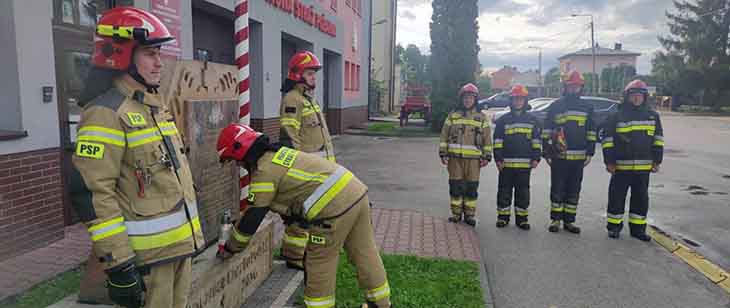
KP PSP in Lipsko celebrated the 82nd anniversary of the outbreak of World War II. (Source: District Headquarters of the State Fire Service in Lipsko [7])
After the arrest of Col. fire Jerzy Lgocki by the Germans, which took place in January 1944, Lt. Col. Józef Mikuła, became the commander-in-chief of the Main Fire Brigade and the underground organization formed from it called "Skała" (The Rock). His deputy was Colonel Stanisław Gieysztor, the then commander of the Warsaw Fire Department. At the same time, 8 Districts of the Main Fire Service were established, such as the following districts: the capital, Warsaw-Lublin-Białystok, Vilnius, Krakow, Radomsko-Częstochowa, Łódź-Poznań-Katowice, Gdynia-Toruń-Bydgoszcz and Lviv.
Large-Scale Activity
At the beginning, they wanted to create a mass organization in which, apart from professional firefighters, there would be also civilians. However, within a few weeks, such an undertaking was abandoned, so that "The Rock" would not be quickly exposed. This organization was strongly supported by the government-in-exile, and the commanding staff of the Home Army cooperated with it.
"Skała" conducted intelligence, reconnaissance and subversive activities. It also obtained weapons from German storage units in a specific location. The members of "Skała" warned the population of towns and villages against possible round-ups. They were also happy to help people who were at risk of, for example, deportation to KL Auschwitz or to forced labor in the Reich. They organized military training for young people. Weapons were also transported to partisan units and the underground national magazines were distributed.
The most effective sabotage and diversive actions of "Rocks" were those under the code name "Fire Extinguisher". They consisted in carrying out extinguishing activities in such a way that, instead of extinguishing the element, the fire was effectively spread further. This was the case, for example, when a German building was being consumed by fire.
Often the firefighters themselves set fire to selected objects of military importance. For example, where there was mass production of ammunition for the Germans, firefighters set fire to ammunition yards, aviation gasoline trains, and even SS garages.
Fire School and Security Corps
Contacts with other firefighters were carried out through the central School of Firefighting in Warsaw. Over time, the German police authorities increased their supervision over the activities of the Polish Fire Service. They also significantly limited the official trips of firefighting units, and when departing for a number of fire operations, German policemen were assigned. As it is not difficult to guess, this fact made it impossible to establish underground contacts to a large extent. It also helped in faster extinguishing of German fires, which were set on fire by Poles themselves.
In November 1943, the Fire Resistance Movement "Skała" co-founded the so-called Security Corps. During the Warsaw Uprising, firefighters from the Firefighters' Resistance "Skała" fought in line units. The greatest number of firefighters was in the "Nałęcz" battalion, which would be commanded by lieutenant Stefan Kaniewski. Many of them also took part in daring actions aimed at freeing Polish prisoners from Pawiak, Aleja Szucha prison, and many other places of detention of Poles.
The Fire Department Today
Fire brigades in many countries, including in the European Union countries, as well as in the United States, Canada, and New Zealand, operate as organizations composed of professionals and volunteers. In Poland, there are professional formations of the State Fire Service (Państwowa Służba Pożarnicza, PSP) and units of the Volunteer Fire Service (Ochotnicza Służba Pożarnicza, OSP).
In each poviat (county) seat there is at least one professional unit of the State Fire Service, which is on 24-hour duty and is constantly ready to go to the action.
Not Just Fires
Whenever something threatens ours, or someone's, health or life, you can, and even should, call the fire brigade. If something is on fire, no matter if it belongs to you or not, the fire brigade must be called immediately. In Poland, we call 998 (or the general emergency number 112), and in America, 911.
The fire department, of course, is not only about extinguishing fires. Firefighters also help in many other dangerous, and sometimes not so dangerous, as — let's just say — difficult or unusual situations. It is even anecdotal when firefighters help, for example, a cat that sits on a tall tree or roof and does not want to, or cannot, go down by itself. The fire department is there to help in a situation when we cannot cope ourselves. Here is a fresh example:
A raccoon climbed one of the lightposts in Żabów (West Pomeranian Voivodeship) and fell asleep. The firefighters who took the animal down came to the rescue. Apparently, the raccoon was comfortable there, because he decided to climb the lantern a second time. [2]
Well, working as a firefighter can be thankless at times.

A raccoon on top of a lighthpost in Żabów (2022) (Source: Volunteer Fire Department in Żabów [2])
We are in a hurry to announce that the raccoon gave up lantern climbing when the firefighters finally took him to the forest.
Not Only the Firefighters
Together with firefighters, chimney sweepers, also patronized by Saint Florian, celebrate their holiday on May 4.
On behalf of the editorial office of Kuryer Polski, today we would like to express our best wishes to all firefighters and chimney sweepers.






